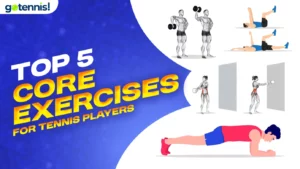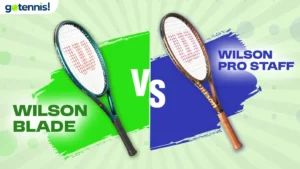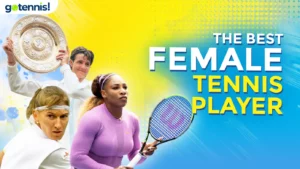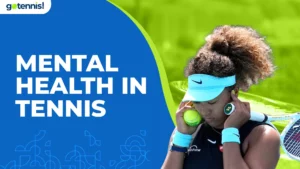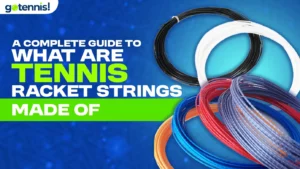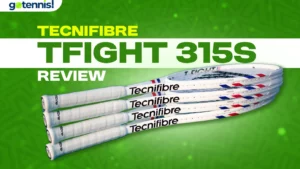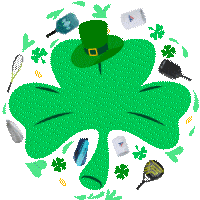If you are wondering how to choose tennis balls for kids, you are in the right place. Getting the correct equipment to achieve the desired success is crucial in tennis. Appropriate equipment selection depends on various factors, especially age, build and experience. With time, your child will be able to manage a tennis ball that is more like an adult ball as they get stronger, taller, have better hand-eye coordination, and, of course, gain more experience. Additionally, it will depend on the type of court, such as a hard court or a soft (grass and clay) court.
Overall, the best equipment and court dimensions depend on your skill level, age, and build. Dig into this entire guide to learn which tennis balls are perfect for your age.
Considerations for Choosing Tennis Balls for Kids
Several factors must be taken into account when choosing a tennis ball for beginners. The selection gets even more complicated when it is done for kids. First and foremost, you should select a ball that is easier to hit and has a slower pace.
You could also choose extra-duty and regular-duty balls, depending on the court’s surface and condition.
Furthermore, the fluctuation in altitude and air pressure may lead you to choose high-altitude tennis balls with slightly less pressure than regular balls to enhance your performance and maintain consistency.
In general, choosing tennis balls for kids that achieve the ideal balance between speed, durability, and playing circumstances can ensure an enjoyable and fulfilling game for all participants.
Tennis Balls for kids under six years
At first look, unique tennis balls may be unnecessary for children. I mean, isn’t any tennis ball of a standard size just as good? While this is indeed partially accurate, different age groups respond better to different-sized balls with different bounces. Picking up unique balls is not just applicable to children but also to adults who have just started learning the game, as larger balls with less bounce are more accessible to hit and help in producing longer rallies.
Foam balls are an excellent choice for children aged between 2 and 6. At this stage, children learn about the basics of the game and the grips and postures of racquets. These balls are a great way to help kids learn the techniques of hitting the ball and playing rallies. Foam balls are typically made of foam. They are very soft and travel very slowly. They have a very low bounce. All these traits make them more accessible for children to use and control.
- Additionally, it is wise to choose a lightweight (23″) racquet with a smaller grip so that young arms can hold and use them properly and not tire soon. The size of the racquets usually depends on the kid’s height.
- Finally, when planning practice sessions with your kids, emphasize smaller courts with lower nets (36′). As tennis is a very physically demanding sport, playing on a smaller court will allow children to gain confidence without feeling overwhelmed. It is also recommended as the balls used by children for this age group are soft, slow, and less bouncy.
Tennis Balls for kids under eight years
- Red tennis balls are an excellent choice for children aged 6 to 8. These balls are typically made of low-compression felt and foam and have a significantly reduced bounce (75% lower bounce than standard tennis balls). All these traits make them more accessible for children to use and control. Overall, selecting red tennis balls for kids can assist young players in mastering the game more simply.
- For children aged 6 to 8, I recommend starting with a red tennis ball, as they are the slowest ball in terms of speed. This allows more time for the child to hit the ball, assists them in making longer rallies, and helps them maintain reasonable control of the ball.
- The colors of the balls usually differentiate their speed and bounce. As skills progress, children can use different colors of balls. Thus, many coaches and trainers use the color of the ball to measure the player’s skill. So, I always recommend starting with a red ball.
- Just like the age group below 6, it is wise to choose a lightweight (23″) racquet for kids under 8. This way, their young arms can maintain and use different racquet postures and movements with ease and do not tire soon. However, coaches and even skilled sellers can advise using a different-sized racquet, considering the child’s skills.
- Lastly, the court size is the same as that of the previous group.
Tennis Balls for Kids under ten years old
- Children aged 7 to 9 years are just skilled enough to begin utilizing regular-sized tennis balls, but they need to prepare for the speed of a standard ball, and they need a build sufficient enough to provide the strength required for an adult game.
- This is where orange tennis balls come in. These balls are intended for children who are still developing their skills. They’re usually made of low-compression felt. They’re slightly smaller and faster than the red balls but have 50% less bounce than standard tennis balls. This allows kids more time to react, making the game more enjoyable for everyone. However, since the balls are faster than the red balls, it also helps the kids develop their skills and prepares them to use quicker and bouncier balls.
- Orange tennis balls are an essential component of the tennis training program for emerging players. These balls are intended for use by more skilled players who have mastered the fundamental abilities and methods required to play with a red ball properly. The bounce and speed of these balls allow players to improve their overall game and skill level on the court.
- When selecting a racquet, consider your child’s age and height. For younger children, a racquet around 23-25 inches is recommended. It would help if you also considered the trainer’s opinion on your child’s experience and capability in this regard.
- Finally, at this age, the kids are strong enough to play on a more extensive court. The speed and bounce of the orange ball are also suited for a more extensive court setup, so the children are trained on a 60′ court.
Tennis Balls for 12 Years Old or Under
- Green tennis balls are an ideal choice for young tennis players aged 10 to 12. They are for kids who can manage and handle a higher level of bounce and speed. They are a pre-stage to using standard tennis balls.
- Typically, green tennis balls maintain the same size as a standard yellow tennis ball. However, their bounce is about 25% lower than that of standard yellow balls. They are made of low-compression felt. Though the ball is slower than the yellow ball, it is the closest one.
- 25″-27″ racquets are ideal for these kids. They are also heavier, which gives them more control over the racquet and increases their chances of maintaining longer rallies. Height, skill, and style play a vital role in this selection.
- Finally, it is suitable for children aged 9-10 or beginner adults transitioning to full-court play (78-foot courts). Using junior tennis balls allows young players to learn the abilities and stamina required for higher-level competition.
Tennis Balls for 19 Years or Adult Players
Tennis balls for adults cater to a wide range of demographics, from seasoned players to amateurs. At the highest level, these balls are frequently constructed of more durable materials and are specifically developed for best performance on hard court surfaces.
- Typically, yellow tennis balls maintain the standard size (6.54 to 6.86 cm) in diameter, as per ITF regulations. They have total bounce according to the standard rules. They are made of pressurized rubber and covered in felt. They are also the fattest balls.
- Skill level and playing style are the primary consideration for adults. However, height is still a regulatory factor here. Taller players often have a more extended reach, so they could prefer either the standard-length racquets (27 inches) or even sometimes slightly extended ones (up to 29″). In comparison, shorter players opt for a standard-size one for better maneuvering and control. Older players may also consider lighter racquets to prevent strain on their arms and shoulders.
- Finally, adult players should use a full-size tennis court (78-foot court), whether for high-level competition or recreational purposes.
- Yellow tennis balls also typically bounce more consistently, which might result in longer rallies and matches. Finally, this improves the players’ experience.
Tips on How to Choose The Right Tennis Balls
There are a few things to take into account while selecting a tennis ball.
First, you must determine your desired level of play. If you’re starting, you’ll want to use balls that are sturdy and easy to play with.
Second, the environment in which you will be performing is another crucial thing to think about. If you live in a hot climate, it is critical to choose balls that will not overheat and become challenging to play with. If you reside in a region with cooler winters, you should look for balls that retain their bounce in colder temperatures.
Do Tennis Balls Differ?
Tennis balls are generally described as being the same: little plastic spheres packed with pressurized air and coated in a layer of felt.
In reality, though, there are numerous varieties of tennis balls, each intended for a particular use in a specific setting.
For example, ordinary duty or all-court tennis balls are intended for use on soft clay courts and indoor courts. Still, additional duty or hard-court balls are specifically developed for use on hard courts.
Furthermore, grass court tennis balls are often softer to absorb better the force caused by hitting the ball and transferring it to the ground as energy.
Ultimately, the majority of tennis players are also aware of high-altitude tennis balls, which have a heavier feel to counteract the effects of the thinner air at high elevations. Overall, tennis balls are much more than what meets the eye.
Final Words
I hope you enjoyed your read. As mentioned earlier, the principles are strictly based on experience, study, coaching, and, to some extent, personal opinion. They can differ depending on the individual.
Before making a final choice, we recommend consulting with a reputable tennis coach or an experienced player.
Frequently Asked Questions
What is the difference between youth and adult tennis balls?
Tennis balls for children and adults differ primarily in size, weight, and compression. Youth tennis balls are often slower and easier to control since they are lighter, softer, and have less compression. They are made to fit the developmental phases of young players and come in three stages (Red, Orange, and Green) with variable bounce and speed levels. Adult tennis balls have more speed and bounce appropriate for regular court play since they are heavier, firmer, and have a higher compression rate. Adult players, including competitive and recreational, use these balls on full-sized courts.
Does it matter what tennis balls you use?
Yes, your game may change depending on the kind of tennis balls you utilize. Tennis balls differ in terms of durability, bounce, and speed based on brand, pressure, and suitability for different surfaces. For instance, pressureless balls stay longer but may feel heavier than pressurized balls, which offer more bounce but lose it faster. It is possible to improve your performance and entire court experience by using the appropriate tennis balls for your playing surface and ability level.
How to tell if tennis balls are good?
A tennis ball’s bounce and feel can be used to determine its quality. Toss a ball from shoulder height; a well-thrown ball ought to return to your waist. To make sure the ball is firm but not too hard, squeeze it. Additionally, check the ball for any obvious wear indicators, such as frayed felt or color loss. The ball is probably worn out and has to be replaced if it is flat, bounces poorly, or feels extremely soft.
What brand of tennis balls is best?
Although playing circumstances and personal taste are major factors in selecting the best tennis ball brand, Wilson and Penn are two of the most well-known brands. Professional tennis tournaments choose Wilson tennis balls due to their reliable bounce and long lifespan. Penn is also well-liked, particularly for leisure play, and is renowned for their durability and versatility on many court types. Dunlop tennis balls are frequently suggested for play at high altitudes because of their resilience and pressure retention.












